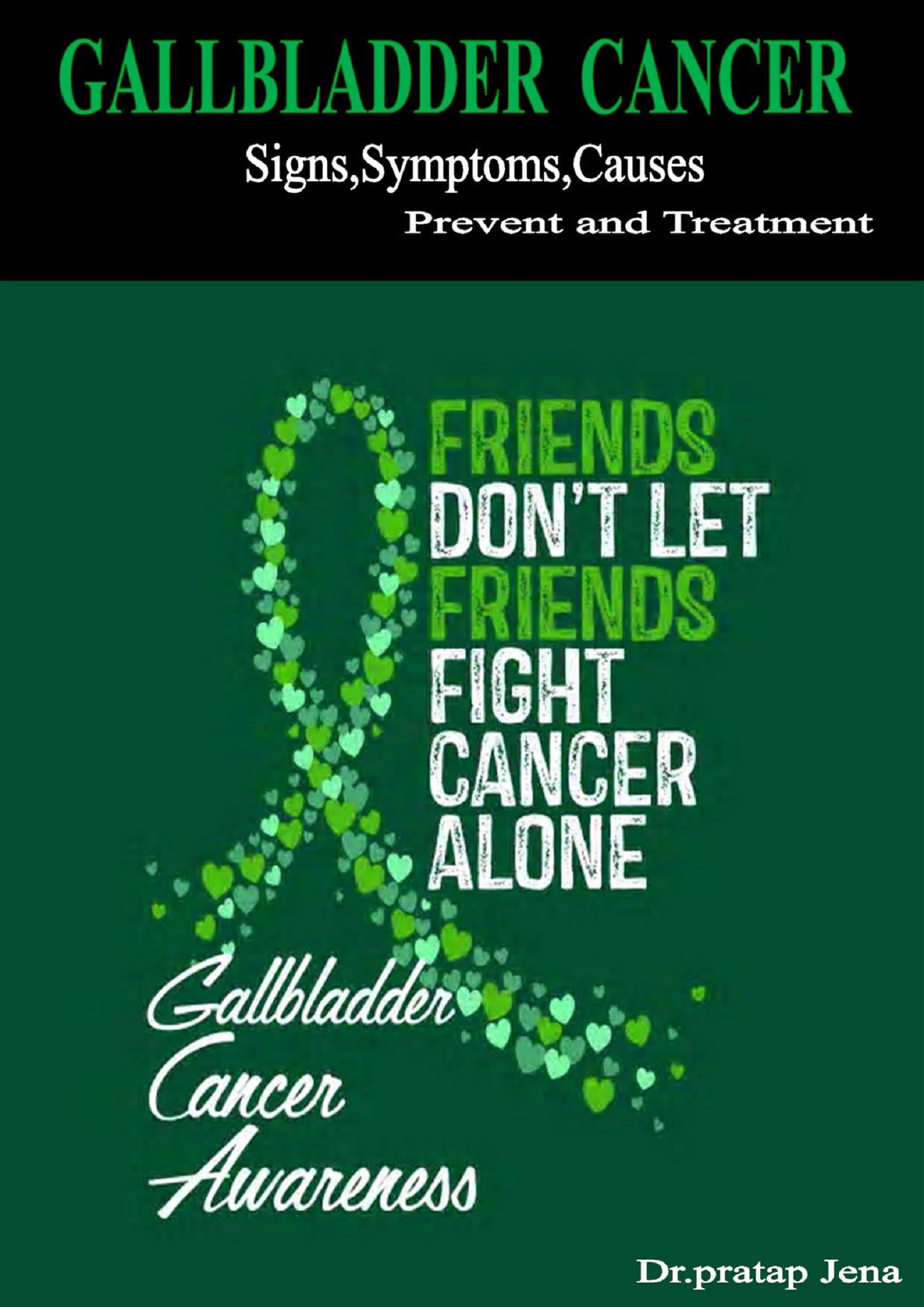
Gallbladder Cancer Signs , Symptoms, Causes,Prevent and Treatment
On Sale
$3.00
$3.00
Your gallbladder is a little sac-like organ about 3 inches in length and 1 inch wide that lives underneath your liver. Its main responsibility is to store bile, which is a liquid made by your liver. After being stored in your gallbladder, bile is discharged into your small intestine to help digest food.
Gallbladder cancer is uncommon. As per the American Cancer Society (ACS):
Just more than 12,000 people in the United States will get a diagnosis in 2019.
It's almost dependably adenocarcinoma, which is a type of cancer that starts in glandular cells in the covering of your organs.
Causes of gallbladder cancer
Doctors don't know exactly what causes gallbladder cancer. They do realize that, similar to all cancer, a mistake, known as a mutation, in an individual's DNA causes uncontrolled quick growth of cells.
As the quantity of cells rapidly builds, a mass, or tumor, shapes. If not treated, these cells eventually spread into nearby tissue and to distant parts of the body.
There are risk factors that expansion the chances for gallbladder cancer. Most of them are related to long haul gallbladder inflammation.
Having these risk factors doesn't mean you'll get cancer. It just methods your odds of getting it may be higher than somebody without the risk.
Gallstones are little lumps of solidified material that structure in your gallbladder when your bile contains too much cholesterol or bilirubin — a pigment framed when red blood cells separate.
When gallstones hinder the path — got bile ducts — out of the gallbladder or in your liver, your gallbladder ends up aroused. This is called cholecystitis, and it can be an acute or long haul, chronic problem.
Chronic inflammation from cholecystitis is the biggest risk factor for gallbladder cancer. As indicated by the American Society of Clinical Oncology (ASCO), gallstones are found in 75 to 90 percent of people with gallbladder cancer.
But it's important to recall that gallstones are extremely common and having them doesn't mean you'll get cancer. As indicated by ASCO, more than 99 percent of people with gallstones never get gallbladder cancer.
Some other factors associated with the risk of gallbladder cancer are:
Porcelain gallbladder. This is when your gallbladder looks white, similar to porcelain, because its dividers are calcified. This can happen after chronic cholecystitis, and it's associated with inflammation.
Gallbladder polyps. Just about 5 percent of these little growths in your gallbladder are cancerous.
Sex. As indicated by the ACS, women get gallbladder cancer up to four times more often than men.
Age. Gallbladder cancer typically affects people more than 65. By and large, people are 72 when they discover they have it.
Ethnic gathering. In the United States, Latin Americans, Native Americans, and Mexicans have the highest risk of gallbladder cancer.
Bile duct problems. Conditions in the bile ducts that hinder the flow of bile can cause it to back up into the gallbladder. This causes inflammation, which builds the risk of gallbladder cancer.
Essential sclerosing cholangitis. Scarring that frames because of inflammation of the bile ducts builds your risk of bile duct and gallbladder cancer.
Typhoid. Salmonella bacteria causes typhoid. People with chronic, long haul infections with or without symptoms have a higher risk of gallbladder cancer.
Relatives with gallbladder cancer. Your risk goes up slightly if there's a history of it in your family.
Gallbladder cancer is uncommon. As per the American Cancer Society (ACS):
Just more than 12,000 people in the United States will get a diagnosis in 2019.
It's almost dependably adenocarcinoma, which is a type of cancer that starts in glandular cells in the covering of your organs.
Causes of gallbladder cancer
Doctors don't know exactly what causes gallbladder cancer. They do realize that, similar to all cancer, a mistake, known as a mutation, in an individual's DNA causes uncontrolled quick growth of cells.
As the quantity of cells rapidly builds, a mass, or tumor, shapes. If not treated, these cells eventually spread into nearby tissue and to distant parts of the body.
There are risk factors that expansion the chances for gallbladder cancer. Most of them are related to long haul gallbladder inflammation.
Having these risk factors doesn't mean you'll get cancer. It just methods your odds of getting it may be higher than somebody without the risk.
Gallstones are little lumps of solidified material that structure in your gallbladder when your bile contains too much cholesterol or bilirubin — a pigment framed when red blood cells separate.
When gallstones hinder the path — got bile ducts — out of the gallbladder or in your liver, your gallbladder ends up aroused. This is called cholecystitis, and it can be an acute or long haul, chronic problem.
Chronic inflammation from cholecystitis is the biggest risk factor for gallbladder cancer. As indicated by the American Society of Clinical Oncology (ASCO), gallstones are found in 75 to 90 percent of people with gallbladder cancer.
But it's important to recall that gallstones are extremely common and having them doesn't mean you'll get cancer. As indicated by ASCO, more than 99 percent of people with gallstones never get gallbladder cancer.
Some other factors associated with the risk of gallbladder cancer are:
Porcelain gallbladder. This is when your gallbladder looks white, similar to porcelain, because its dividers are calcified. This can happen after chronic cholecystitis, and it's associated with inflammation.
Gallbladder polyps. Just about 5 percent of these little growths in your gallbladder are cancerous.
Sex. As indicated by the ACS, women get gallbladder cancer up to four times more often than men.
Age. Gallbladder cancer typically affects people more than 65. By and large, people are 72 when they discover they have it.
Ethnic gathering. In the United States, Latin Americans, Native Americans, and Mexicans have the highest risk of gallbladder cancer.
Bile duct problems. Conditions in the bile ducts that hinder the flow of bile can cause it to back up into the gallbladder. This causes inflammation, which builds the risk of gallbladder cancer.
Essential sclerosing cholangitis. Scarring that frames because of inflammation of the bile ducts builds your risk of bile duct and gallbladder cancer.
Typhoid. Salmonella bacteria causes typhoid. People with chronic, long haul infections with or without symptoms have a higher risk of gallbladder cancer.
Relatives with gallbladder cancer. Your risk goes up slightly if there's a history of it in your family.

